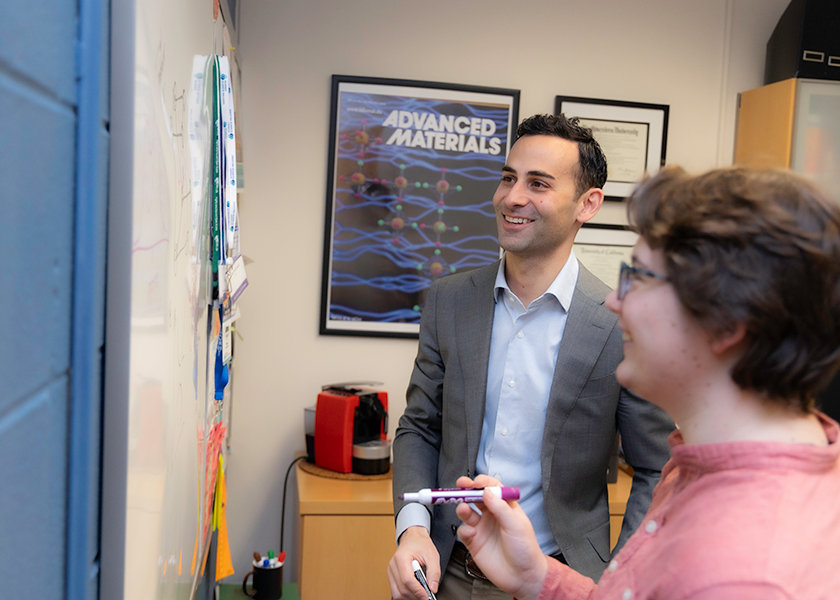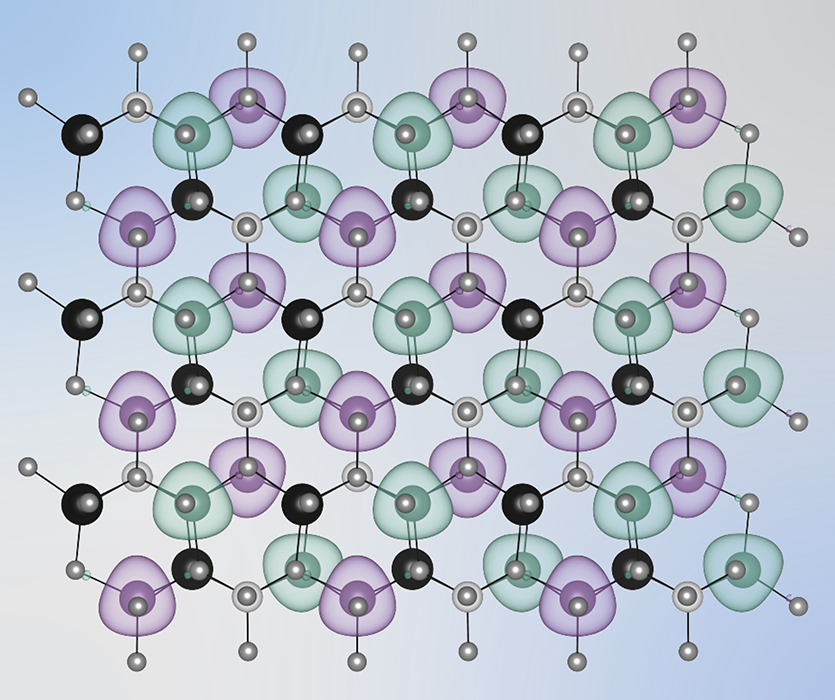The Problem
Conventional antiferromagnetic materials exhibit net zero magnetization and spin-degenerate energy bands, making them incompatible with current memory technologies that rely on net magnetization.
Conventional antiferromagnetic materials exhibit net zero magnetization and spin-degenerate energy bands, making them incompatible with current memory technologies that rely on net magnetization.
A new class of antiferromagnetic materials with non-relativistic spin splitting that can exhibit ferromagnetic-like behavior, enabling spin currents without magnetization cancellation.
These materials could enable the development of denser, faster, and more energy-efficient memory technologies, addressing critical limitations in current electronic devices.
Professor James Rondinelli; Lin-Ding Yuan, research fellow in the Materials Theory and Design Group
The memory technology found in today’s smartphones, tablets, computers, and other electronic devices is built using ferromagnetic materials. While an incentive exists to move to antiferromagnetic materials, which promise denser, more energy-efficient and faster memory, obstacles stand in the way of their adoption.
One of the biggest? Memory technology relies on the net magnetization of its materials to operate, and conventional antiferromagnetic materials exhibit net zero magnetization and spin degenerate energy bands. A 1964 study by S. I. Pekar and E. I. Rashba, however, pointed to the possibility of a subclass of “spin split” antiferromagnetic materials in which the energy levels of electrons of opposite spin differ, a feature resembling ferromagnets. The technology to characterize and design these materials didn’t exist – until recently.
In a study titled “Nonrelativistic Spin Splitting at the Brillouin Zone Center in Compensated Magnets,” published Nov. 18 in Physical Review Letters, a team of researchers at Northwestern University and Indiana University used a combination of computational modeling, symmetry analysis, and materials design to reveal a new type of antiferromagnetic material with non-relativistic spin splitting (NRSS).
“Our work provides the design prescription where you can have ferromagnetic-like behavior, but in an antiferromagnetic compound. This is of interest for a variety of technological applications,” said James Rondinelli, Walter Dill Scott Professor of Materials Science and Engineering at Northwestern Engineering and corresponding author of the paper.

In the paper, the researchers describe the symmetry conditions and characteristic signatures of this new type of antiferromagnet and propose that spin splitting at the Γ point is key to exhibiting the desired behaviors.
The team used density functional theory calculations to validate their models, looking specifically at manganese-silicon-nitride and its variants. They found that removal of spin degeneracy at the Γ point enabled the compound to exhibit ferromagnetic behavior because it allowed for the generation of spin currents without the cancellation of magnetization that typically arises from alternating spin polarizations.
The design characteristics of these compounds differ from those of the “altermagnets” described in scientific literature, which also exhibit ferromagnetic behaviors. Namely, the new material compounds, unlike altermagnets, have opposite spin sublattices that are not connected by any crystal rotation or reflection operations.

“Our work suggests that altermagnets are actually a subset of NRSS antiferromagnets,” said Lin-Ding Yuan, a research fellow at Northwestern Engineering in the Materials Theory and Design Group and lead author of the paper. “It’s a paradigm shift in how the physics community thinks about the classification of antiferromagnetic materials.”
To aid in the discovery of new spin-split antiferromagnetic materials, the researchers have created a web-based tool called “findmagsym” that uses the design principles the team developed to automate the screening of compounds for this phenomena. Now, the team seeks partners to grow the material compounds they identified both to test and to refine their model under real world conditions.
“Our work really bridges the gap between researchers working in theory and the experimentalists that develop the compounds,” Rondinelli said. “If you look at the literature, only about five materials in this class have been synthesized, even though hundreds of antiferromagnets have been reported, because of the difficulty in performing symmetry analysis to determine if a compound will exhibit the desired characteristics. By expanding the theory and methodology with a user-friendly tool to screen new candidates in this emerging materials class, we anticipate significant growth in the community working in this field.”
Alexandro B. Georgescu of Indiana University served as a coauthor of the paper.